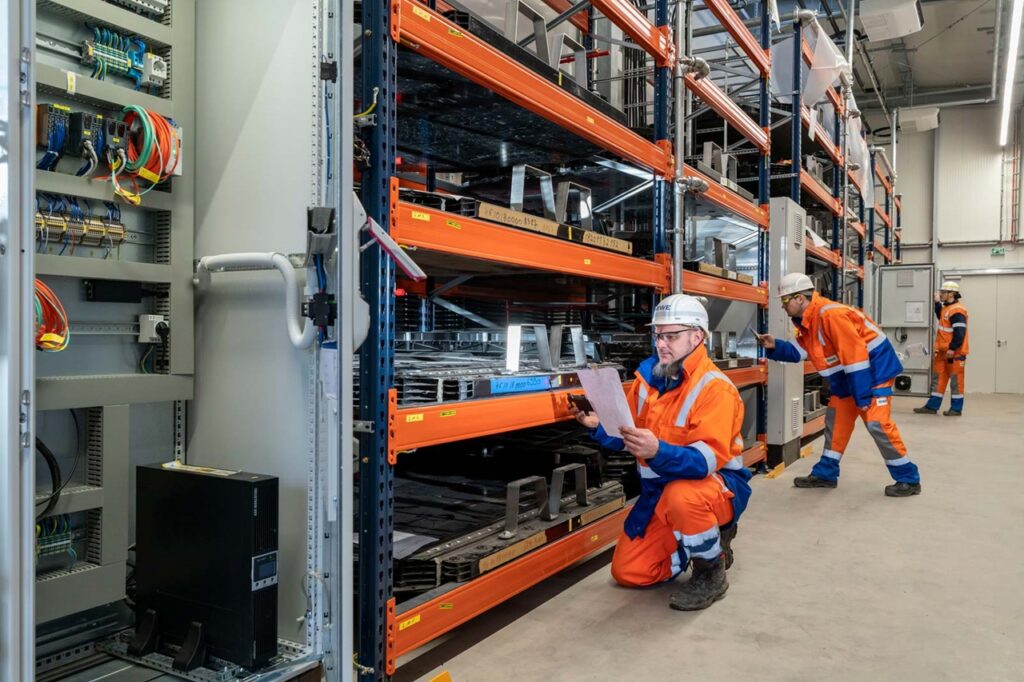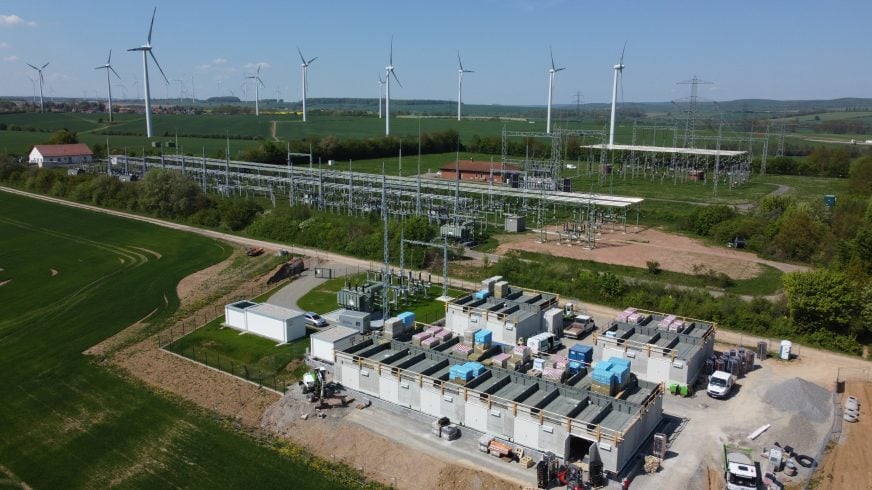
Germany’s early lead among Europe’s battery storage adopters is now long gone. But with the urgency to deploy renewable energy compounded by the need for greater energy independence, some industry players and experts see change coming on the horizon in the German market, Cameron Murray writes.
This is an extract of an article which appears in Vol.32 of PV Tech Power, Solar Media’s quarterly technical journal for the downstream solar industry. Every edition includes ‘Storage & Smart Power,’ a dedicated section contributed by the team at Energy-Storage.news.
Enjoy 12 months of exclusive analysis
- Regular insight and analysis of the industry’s biggest developments
- In-depth interviews with the industry’s leading figures
- Annual digital subscription to the PV Tech Power journal
- Discounts on Solar Media’s portfolio of events, in-person and virtual
As by far Europe’s largest economy, the German market is usually on the radar of businesses in any fast-growing and internationalising sector. But when it comes to large-scale front-of-meter battery storage projects, its deployment figures for 2021 lagged far behind the UK, Ireland and France.
The residential sector has conversely always been very strong, as homeowners increasingly seek to back up their home PV systems. But just 32MW of utility-scale (1MW-plus) projects were installed in the
country in 2021, according to a recent report by a group of RWTH Aachen University-based and spinout organisations.
However, the situation is starting to change, one of its authors tells PV Tech Power.
“The large-scale market is gaining traction, with different drivers from previous years. You have big Innovation Tenders for co-located sites, you have many industrial sites installing MW-plus systems
and you also have the Grid Boosters which will provide a huge boost to the market,” says Jan Figgener, head of grid integration and storage system analysis at ISEA RWTH Aachen University.
People see the German market now as ‘boiling’ and want to be there early, adds Florian Mayr, partner at clean energy finance and strategy consultancy Apricum.
Two companies which were part of the start of the energy storage boom in the UK, investor Gore Street Capital and renewables developer Anesco, entered the German market in quarter one 2022. In June, Swiss
Life Asset Managers, which has US$290 billion of investments, joined them when it acquired a platform with a 220MW BESS pipeline.
But this bullishness isn’t necessarily widely shared. Claus Urbanke, head of wind and solar Germany for Norwegian hydropower company Statkraft, says that the short-term storage needs of the market are
limited and that Statkraft does not currently see a commercial case for standalone battery energy storage, although it is participating in the Innovation Tenders from federal network operator Bundesnetzagentur for co-location, explained later.
Jorg Blaurock, partner at 3Energie Consulting which produces annual reports on the storage sector for national storage association BVES, agrees to an extent. He says that Germany does not need any more
energy storage for grid stability as its needs are already well served by existing assets and interconnection with other countries, and that the main driver is opportunities in the wholesale energy market capitalising
on increased volatility.
Where are we today?
One big reason why the German battery energy storage market has not taken off yet is because of a relatively small grid frequency services market, typically the first driver for battery storage because of its
stable revenue guarantees. This relates to Germany’s greater array of options for grid flexibility, including numerous interconnectors to other national grids.
Value stacking is also more difficult due to unfavourable regulatory conditions. This stems from the existing regulatory definitions for storage assets being inadequate according to BVES, although should change going forward after new definitions were brought into German law in May 2022.
Frequency containment reserve (FCR) is the main ancillary service for batteries to play in, but the 550-600MW market is close to saturation with around 600MW of utility-scale battery energy storage installed
at the time of writing, according to project developer ECO STOR.
FCR will soon be replaced by aFRR, which will help make the service more international amongst Europe’s interconnected markets, although will not on its own increase the size of the market, points out Statkraft’s Urbanke.
“There was a short time when these (short duration storage) projects were commercially viable in primary reserve (FCR), but since this is such a small segment of the market which got exploited quickly,
this opportunity doesn’t exist anymore,” he says.
The period he refers to is around 2018 when nearly 200MW of utility-scale battery storage was installed according to Delta-EE, a record year for the sector. But the market slowed substantially in 2020 and 2021 as FCR was increasingly saturated.
The largest operational battery storage system in Germany today is the Lausitz Battery Energy Storage System at 60MW/52MWh, attached to a coal plant operated by power plant operator and
utility LEAG. LEAG, RWE and other large utilities have been the main players installing large systems to-date, says Lars Fallant, COO of project developer Tricera Energy.
These are market-driven projects, he adds, capitalising on grid frequency services and trading opportunities. These, plus the Innovation Tenders incentivising co-located storage projects and a handful
of massive ‘Grid Booster’ storage tenders are the main drivers of the market going forward, according to all the sources we interviewed.

‘Ukraine has amplified the drivers’: ancillary services and short-term trading
Along with the rest of the European Union, Germany recently upped its renewable energy targets for 2030 to reduce reliance more quickly on Russian fossil fuels after its invasion of Ukraine.
As more renewable resources come onto the German grid, this will increase market volatility which in turn creates an opportunity for battery storage to capitalise in short-term trading markets. Delta-EE anticipates that
this ramp-up in storage will start in 2025 although the numbers it is expecting are still far below what is needed. It expects around 450MW of additions in 2025 growing (with a dip in 2026) to around 800MW in 2030.
But even before any ramp-up of renewable resource deployment happens – it’s still early days – the existing revenue opportunities for storage have increased substantially, says Georg Gallmetzer, managing director of ECO STOR. And that is despite a revenue source that has historically made up half of the value stack for big batteries no longer being available for projects being commissioned after 2022.
He says that the prices in the auxiliary (ancillary) service markets and spreads in short-term trading have multiplied so much recently that the business model is stronger than last year, even with a 30% increase in material costs due to supply chain constraints (lithium-ion batteries, transformers, concrete and building work etc).
Fallant partially agrees: “The frequency response and energy trading markets have increased recently, but most owners go for frequency response because it ages the battery less quickly because of shallower
cycling. But the outlook is that batteries will do more energy trading, although no one knows exactly where the prices will go.
Because growth in energy storage will never keep up with growth in renewables, according to Gallmetzer, opportunities for storage in trading and grid services will continue to increase until the 2030s or
2040s when batteries may eventually begin to cannibalise their revenue opportunities.
This is an extract of an article which appears in Vol.32 of PV Tech Power, Solar Media’s quarterly technical journal for the downstream solar industry. Every edition includes ‘Storage & Smart Power,’ a dedicated section contributed by the team at Energy-Storage.news. Subscribe to the journal and read the newest (Q3 2022) edition and all previous issues here.

